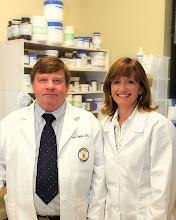Vitamin E is a well-known cosmetic ingredient that has time proven scientific research to substantiate its claims as one of the best antioxidants on the market. In the scientific world Vitamin E is called tocopherol which is derived from the Greek words tokos, meaning "childbirth," and pherein meaning "to carry." The "ol" on the end of the word designates it as an alcohol. Vitamin E can be divided into two basic forms-tocopherols and tocotrienols. These two forms can be further subdivided into eight different forms depending on their chemical composition.
When applied topically Vitamin E has two major functions: to protect the skin from UV light damage and maintain the skin's barrier function. Even a little UV exposure is able to deplete Vitamin E content thereby reducing the antioxidant protection. This occurs even without reddening of the skin. The damaged skin has the ability to return the levels of Vitamin E to almost baseline within 24 hours, but a lot of epidermal damage can occur within that time period. Vitamin E should be used in sunscreens because of its ability to reduce free radical damage in the skin thus reducing the severity of sunburn. It can be used both before and after the skin's exposure to the sun. Vitamin E is best used in combination with other antioxidants such as Vitamin C, green tea, and coenzyme Q10.
Vitamin E is the major lipid-soluble antioxidant in the cell antioxidant defense system. Biologically Vitamin E protects fatty acids and other components of cell membranes and LDL from oxidation by free radicals. When taken orally or used topically Vitamin E can help the body in its fight against free radicals. Vitamin E can help slow down the aging process and is a great preventive against vascular damage.
Vitamin E should be incorporated into your skin care treatment plan to provide a powerful antioxidant that is crucial in fighting skin aging. Free radical damage leads to a compromised barrier function leading to water loss and bacterial invasion hindering the skin's ability to function normally. Vitamin E has a role in preventing these problems. It is highly recommended that you add a product containing Vitamin E to your skin care arsenal.
Monday, October 26, 2009
Tuesday, October 13, 2009
pH And Skincare Products How Do They Relate
What does the term pH mean and why is it pertinent to skincare products? The exact definition means "the logarithmic of the reciprocal of the hydrogen ion concentration" which simplistically is used as a measuring system for comparing strengths of acids and bases. The scale is measured from 1 to 14 with water, being neutral, at the midway point of 7. Anything below 7 is categorized as an acid and anything above 7 is categorized as a base. The stronger the solution the further it is from neutral (7) in either direction. The more acidic compounds are at the lower end of the scale and the more basic compounds are at the higher end of the scale. The stronger the compound either acid or base the more potentially irritating it is.
The pH of healthy skin is slightly acidic in the range of 4.5-6. This area of the skin is referred to as the acid mantle. The acid mantle is an imperceptible thin viscous fluid that is important for the maintenance of the overall health of skin and hair. This slightly acidic pH allows the acid mantle to fight off bacteria, fungus, and pollutants. Stress and hormonal changes can cause the acid mantle to break down creating an alkaline environment. If the skin becomes too basic, it can become dry and irritated decreasing its ability to fight off bacteria leading to blemishes and breakouts. Most commercial cleansers have a pH of 8 or more and most soaps have a pH of 9.0-11. These basic products strip away the protective acid mantle layer creating a potentially toxic environment.
Optimally skincare products should have a pH close to that of your own skin. Alpha hydroxy acid products must have a lower pH in order to be effective in exfoliating the skin. As a consumer you should be aware of the pH of the skincare products that you use so that you will know what effect the products have on your skin. Choose products with the appropriate pH for the skincare result that you desire the product to produce.
The pH of healthy skin is slightly acidic in the range of 4.5-6. This area of the skin is referred to as the acid mantle. The acid mantle is an imperceptible thin viscous fluid that is important for the maintenance of the overall health of skin and hair. This slightly acidic pH allows the acid mantle to fight off bacteria, fungus, and pollutants. Stress and hormonal changes can cause the acid mantle to break down creating an alkaline environment. If the skin becomes too basic, it can become dry and irritated decreasing its ability to fight off bacteria leading to blemishes and breakouts. Most commercial cleansers have a pH of 8 or more and most soaps have a pH of 9.0-11. These basic products strip away the protective acid mantle layer creating a potentially toxic environment.
Optimally skincare products should have a pH close to that of your own skin. Alpha hydroxy acid products must have a lower pH in order to be effective in exfoliating the skin. As a consumer you should be aware of the pH of the skincare products that you use so that you will know what effect the products have on your skin. Choose products with the appropriate pH for the skincare result that you desire the product to produce.
Labels:
acid mantle,
glycolic acid,
pH,
skincare
Subscribe to:
Comments (Atom)

